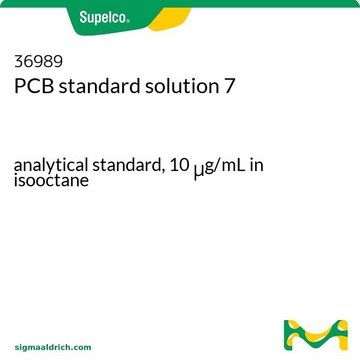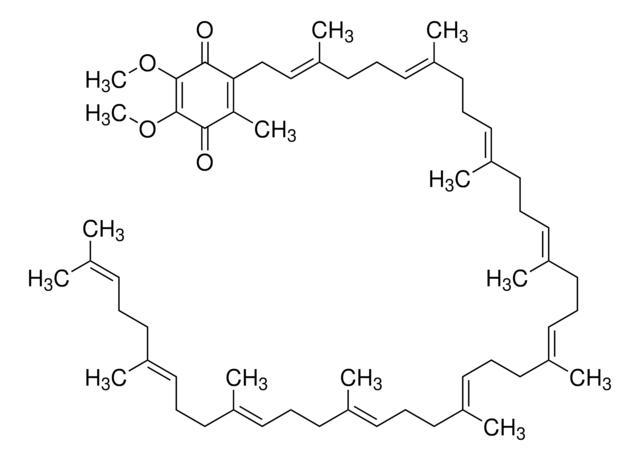BCR289
2,4′-Dichlorobiphenyl
BCR®, certified reference material
About This Item
Produits recommandés
Qualité
certified reference material
Agence
BCR®
Fabricant/nom de marque
JRC
Format
neat
Température de stockage
2-8°C
Chaîne SMILES
Clc1ccc(cc1)-c2ccccc2Cl
InChI
1S/C12H8Cl2/c13-10-7-5-9(6-8-10)11-3-1-2-4-12(11)14/h1-8H
Clé InChI
UFNIBRDIUNVOMX-UHFFFAOYSA-N
Description générale
Application
Remarque sur l'analyse
BCR289
Informations légales
Mention d'avertissement
Warning
Mentions de danger
Conseils de prudence
Classification des risques
Aquatic Acute 1 - Aquatic Chronic 1 - STOT RE 2
Code de la classe de stockage
11 - Combustible Solids
Classe de danger pour l'eau (WGK)
WGK 3
Point d'éclair (°F)
Not applicable
Point d'éclair (°C)
Not applicable
Faites votre choix parmi les versions les plus récentes :
Certificats d'analyse (COA)
It looks like we've run into a problem, but you can still download Certificates of Analysis from our Documents section.
Si vous avez besoin d'assistance, veuillez contacter Service Clients
Déjà en possession de ce produit ?
Retrouvez la documentation relative aux produits que vous avez récemment achetés dans la Bibliothèque de documents.
Notre équipe de scientifiques dispose d'une expérience dans tous les secteurs de la recherche, notamment en sciences de la vie, science des matériaux, synthèse chimique, chromatographie, analyse et dans de nombreux autres domaines..
Contacter notre Service technique










